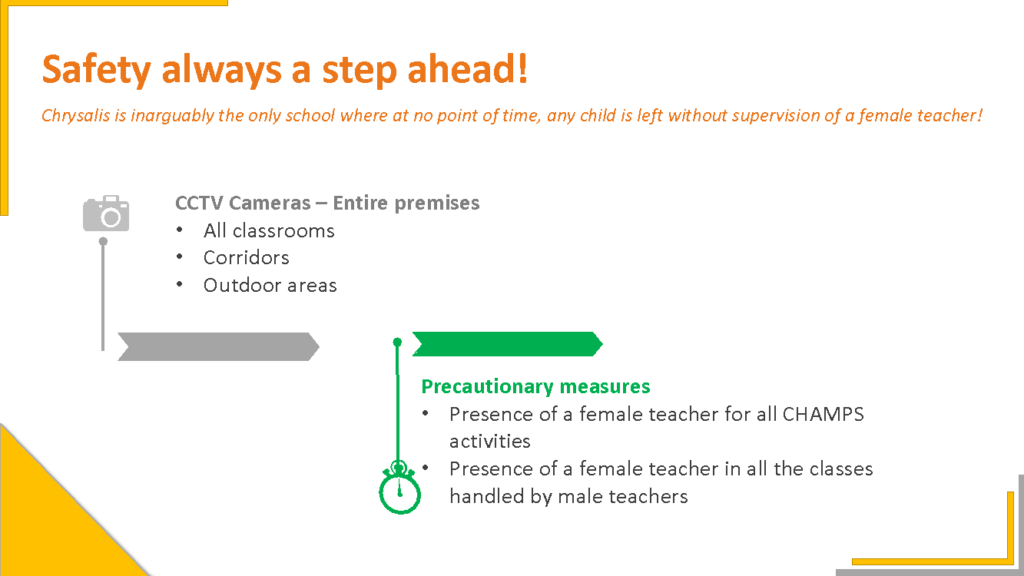The people, society, languages, and landscape of India are all very different from one another. The states and capitals of India are the first things you need to know about Indian geography. This is basic information that every student should learn early on in their academic career. Learning the states and their capitals can be enjoyable and educational, whether you’re getting ready for school exams or quizzes or trying to improve your general knowledge.
Students will find this easy-to-use study guide very helpful. This article has everything you need to learn geography, from tables and memory tricks to fun facts.
The Complete List of Indian States and Capitals
Mastering the list of Indian states and capitals is the first step to understanding India’s landscape. Students can use this information to build a strong base for learning things like population, natural resources, government borders, and temperature. First, let’s look at a clean, simple table with the names of all 28 states and their capitals:
| S. No. | State | Capital |
| 1 | Andhra Pradesh | Hyderabad (old capital), Amaravati (current capital) |
| 2 | Arunachal Pradesh | Itanagar |
| 3 | Assam | Dispur |
| 4 | Bihar | Patna |
| 5 | Chhattisgarh | Raipur |
| 6 | Goa | Panaji |
| 7 | Gujarat | Gandhinagar |
| 8 | Haryana | Chandigarh (shared with Punjab) |
| 9 | Himachal Pradesh | Shimla |
| 10 | Jharkhand | Ranchi |
| 11 | Karnataka | Bengaluru |
| 12 | Kerala | Thiruvananthapuram |
| 13 | Madhya Pradesh | Bhopal |
| 14 | Maharashtra | Mumbai |
| 15 | Manipur | Imphal |
| 16 | Meghalaya | Shillong |
| 17 | Mizoram | Aizawl |
| 18 | Nagaland | Kohima |
| 19 | Odisha | Bhubaneswar |
| 20 | Punjab | Chandigarh (shared with Haryana) |
| 21 | Rajasthan | Jaipur |
| 22 | Sikkim | Gangtok |
| 23 | Tamil Nadu | Chennai |
| 24 | Telangana | Hyderabad |
| 25 | Tripura | Agartala |
| 26 | Uttar Pradesh | Lucknow |
| 27 | Uttarakhand | Dehradun |
| 28 | West Bengal | Kolkata |
Special Note:
- Amaravati is the current capital of Andhra Pradesh. However, administrative functions are shared among Amaravati (legislative), Visakhapatnam (executive), and Kurnool (judicial).
- Chandigarh serves as the capital of both Punjab and Haryana.
Union Territories (UTs) and Their Capitals
This country has 8 Union Territories as well as 28 states. The Central Government runs all Union Territories (UTs), but some, like Delhi and Puducherry, have their own governing bodies. Some UTs also have their own ways of handling finances, which students should know. Let’s take a look at them below:
| S. No. | Union Territory | Capital |
| 1 | Andaman and Nicobar Islands | Port Blair |
| 2 | Chandigarh | Chandigarh |
| 3 | Dadra and Nagar Haveli and Daman & Diu | Daman |
| 4 | Delhi (National Capital Territory) | New Delhi |
| 5 | Jammu and Kashmir | Srinagar (Summer), Jammu (Winter) |
| 6 | Ladakh | Leh |
| 7 | Lakshadweep | Kavaratti |
| 8 | Puducherry | Puducherry |
Special Cases:
- Jammu & Kashmir: It follows the bi-annual “Darbar Move” system, with Srinagar being the seat of government in the summer and Jammu in the winter.
- Chandigarh: The city of Chandigarh is the capital of both Punjab and Haryana, even though it is a Union Territory.
- Dadra and Nagar Haveli and Daman & Diu: In 2020, the two merged into one UT, turning it into one administrative unit.
Why Memorizing States and Capitals is Important for Students
Geography is more than just maps; it’s about getting to know our country better. Understanding the states and capitals of India is the first step for students in understanding more abstract concepts like temperature zones, landforms, population distribution, and cultural variety. In a way that is simple to remember and apply in real life, this student learning guide stresses the importance of learning this basic knowledge.
This is important because:
- It helps you get a clear picture of India in your mind.
- Geography is essential for GK tests, games, and competitive exams like the UPSC or SSC.
- It makes people interested in and knowledgeable about other places.
- It helps kids understand how India is both rich and diverse.
Knowing all states and their capitals of India also boosts national pride and knowledge of government, as each state has its own customs, laws, and leaders.
How to Memorize States and Capitals of India (Fun Techniques)
Let’s get to the most helpful part: how to memorize states and capitals of India without getting overloaded. If you don’t want to cram, try smart methods like training with maps, making funny connections, or grouping by area. These easy tips can help you learn faster and better if you use them repeatedly and make the process fun daily.
The Grouping Method: Region by Region
Break down the country into regions to avoid information overload:
- North India: Punjab, Haryana, Himachal Pradesh, etc.
- South India: Kerala, Tamil Nadu, Karnataka, etc.
- East India: Odisha, West Bengal, Bihar, etc.
- West India: Rajasthan, Gujarat, Maharashtra, Goa
- Central India: Madhya Pradesh, Chhattisgarh
- North-East India: Assam, Manipur, Mizoram, etc.
This will help you understand regional parallels and memorize states and capitals more effectively.
Storytelling and Acronyms (Mnemonic Devices)
Memory tricks can work wonders. Here are a few examples:
- “Himachal’s Snowy Shimla”
Helps remember that Shimla is the capital of Himachal Pradesh.
- “Haryana’s Chair in Chandigarh”
Helps remember that Haryana’s capital is Chandigarh.
- “Rajasthan’s Jewels in Jaipur”
Think of royal jewels from Rajasthan displayed in Jaipur, the Pink City, which is known for its palaces.
- “Odisha’s Breeze in Bhubaneswar”
Picture the coastal breeze of Odisha blowing through Bhubaneswar, its sacred capital.
These quirky phrases make boring data much more memorable!
Visual Learning with Maps
A picture is worth a thousand words, but a map is worth a thousand times more regarding geography.
You can use maps in the following ways:
- Give each state a different color.
- Mark the capitals in bold.
- Test your skills with blank India shape maps.
- Use paper maps to make puzzles.
This method helps you remember where things you see and how to get to them.
Tips for Long-Term Retention and Practice
The states and capitals of India must be remembered once you have learned them. Here are some tried-and-true ways:
- Make it into a quiz game to play with classmates or friends.
- Put bold letters on one side of your flashcards and states on the other.
- Sing it out loud. Make up songs or lines for the names.
- The best way to learn something is to show someone else how to do it.
- Some games and apps can help you match the states to their cities.
States Formed in Recent Years
India’s landforms have changed over time. Over time, the map has changed because of choices made in politics and government. Here are some important examples:
- When it split from Andhra Pradesh in 2014, Telangana became India’s 29th state.
- Uttarakhand, Jharkhand, and Chhattisgarh were all created in 2000 to improve governance and meet the needs of the area.
These changes tell us that location is constantly changing, so it’s essential to stay current.
Interesting Facts About Indian States You Should Know
To keep students engaged, here are some fascinating facts about Indian states:
- Rajasthan is the largest state in terms of area.
- Goa is the smallest.
- Uttar Pradesh has the highest population.
- Sikkim is known as the most environmentally conscious state.
- Kerala has the highest literacy rate.
- Bihar is home to Nalanda, one of the world’s oldest universities.
- Madhya Pradesh is often referred to as the “Heart of India”.
Such facts spark curiosity and make geography much more than just memorizing names.
Conclusion: Master India’s Geography with Confidence
It’s not just necessary for academic purposes to learn the states and capitals of India; it’s also a good way to get to know your nation. Every student can easily master this subject with the help of visual tools, fun memory tricks, and regular practice.
You can study for exams using this and learn a lot about India’s history and geography. You’ll soon be able to identify all states and their capitals of India without any difficulty if you keep learning and being curious.
FAQ
How many states and capitals of India are there currently?
There are 28 states and 8 Union Territories in India right now, each with its own capital city. The states and capitals of India are all constituted by this framework.
What is the easiest way to memorize states and capitals?
Use mnemonics, visual maps, or notes to help you remember the list. These methods make it easier and faster to memorize states and capitals.
What are the new Union Territories created recently?
In 2019, Jammu & Kashmir was split into two UTs: Jammu & Kashmir and Ladakh. Dadra & Nagar Haveli merged with Daman & Diu to form one UT.
Should I use the List of Indian states and capitals chart daily?
Yes, reviewing the list of Indian states and capitals regularly helps reinforce memory, especially for students preparing for exams or general knowledge quizzes.
Which state has two capitals?
Jammu and Kashmir has two seasonal capitals: Srinagar (summer) and Jammu (winter). Himachal Pradesh also designates Dharamshala as its winter capital, though Shimla remains the primary one.


